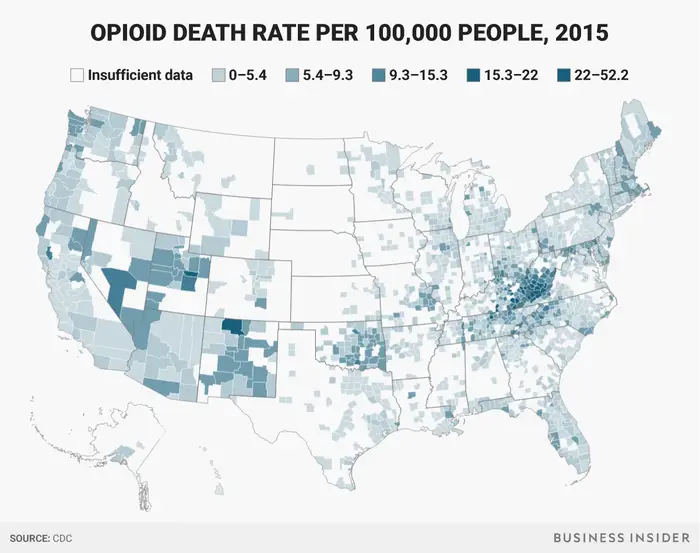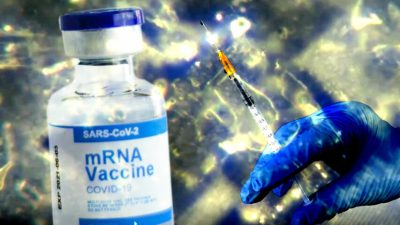Dealing with the Opioid Crisis at the Strategic Level
Harry Nelson
The United States of Opioids: A Prescription for Liberating a Nation in Pain
Charleston, S. C.: ForbesBooks, 2019
See also: “Work to be Such a Man,” “Kensington,” & “Opiates for America’s Heartland”
Opioid abuse is one of the major problems affecting Americans today, and it is also a factor in the Great Replacement. In 2019 Harry Nelson, a lawyer who has experience with the legal problems stemming from this drug plague, wrote a book describing the problem from a legal perspective.
All white advocates need to be aware of the opioid epidemic. Many of our people are locked into addiction. Addicts create problems, such as when the drive for one’s next fix causes an addict to steal to get money for drugs. Many also drop out of the work force. America’s deindustrialized towns have a harder time bringing their economies back from the brink because so many addicts have lost their job skills and are stuck in a downward spiral.
The history of opioids
Opiates are a chemical compound which is naturally derived from the poppy plant. Opiates were used by humans as early as 50,000 years ago. Opiate use was likewise common in ancient Greece, Egypt, and Babylon. Opiates are useful since they kill pain, act as a sleep aid, and can treat diarrhea. Even after Islam overwhelmed Arabia, alcohol was banned there but opiates were not. Farmers in Asia still produce opiates to this day by scraping out a brown, gummy substance from the seed pod and drying it in the Sun. Harry Nelson himself writes that he has used opiates to help with sleep and has awakened feeling refreshed as a result.

Opiates come from a gummy substance that forms around the seeds of the poppy. Opiates have been used by humans since the Stone Age.
Scientists discovered the active ingredients in opiates during the nineteenth century and began synthesizing them into more potent forms which are collectively referred to as opioids. Opioids are easy and cheap to produce. Fentanyl, one of the most common opioids produced today as well as the deadliest, was developed in 1959. Opioids are likewise easy to smuggle, and given America’s deliberately opened border, they are flowing into the United States in huge quantities.
Opium was first criminalized in California in the 1850s, when whites sought to clamp down on Chinese immigrant crime. The Civil War led to a nineteenth-century opium epidemic in the United States that is forgotten today. The armies of both the North and South liberally dispensed opium to their soldiers. The Union Army alone issued ten million opium pills and 2.8 million ounces of opium powders and tinctures. Many women at the time also became addicted because they were given opiates to help ease the pain of menstrual cramps.
All recreational drugs are dangerous, but opioids are especially so. The present opioid crisis began in 1999, although deaths from opioids have always been a problem in American society. Elvis Presley, for example, died from the effects of drug use, including opioids in 1977. His daughter, the late Lisa Marie Presley, who wrote the Foreword to the book under review, became addicted to opioids herself after she was prescribed them after giving birth. Nelson writes that the first time he became aware of death from opioid use was when John Belushi infamously died of an overdose of heroin and cocaine in 1982.
There has always been a fashionable allure to opioids, especially heroin. During the nineteenth century many prominent artists and authors used these substances. Their problems soon became too big to ignore, however. President Theodore Roosevelt appointed a commissioner to deal with the problem in 1908, and shortly thereafter Congress outlawed the importation of opium for smoking.
Today, opiates are regulated by the law via classifications, or “schedules.” Schedule I drugs are those which have no medical benefit. The only opioid in this category is heroin. Schedule II drugs can be prescribed, but it is recognized that these drugs have a high risk for abuse and dependence. This includes natural opium, morphine, codeine, fentanyl, oxycodone, methadone, meperidine, and carfentanil. Schedule III drugs are of moderate risk, and buprenorphine was moved into that category in 2002. Schedule IV consists of less dangerous drugs, including Tramadol, Valium, and Xanax. The only Schedule V opioid is cough syrup containing codeine.
First responses
The first line of defense against the epidemic of opioid overdoses is the drug naloxone, which is more commonly called Narcan. It was approved in 1971 and was made into a form that can be administered nasally in 2015. Naloxone can snap a patient out of an opioid overdose immediately, thereby saving him. Receiving a dose of naloxone is an unpleasant experience for the patient, however; many vomit when awakened — and many dislike the fact they are ripped out of the bliss of a high.
Some states have allowed naloxone to be purchased over the counter. Should someone have a loved one who is addicted to opioids, having naloxone is important. Now, however, some addicts use naloxone as a safety net, and even use the drug as part of their high, so naloxone does not get to the root of the problem.
One way to do this is to break addiction altogether. This is difficult under any circumstance, and until recently insurance companies refused to cover addiction treatment. The Affordable Care Act of 2010 expanded coverage requirements, however, and in 2018, another tranche of laws was passed to expand Medicare/Medicaid coverage to addiction in rural areas and Indian reservations.
The courts have likewise permitted state governments to ignore medical privacy rules in order to track those patients who are being prescribed opioids by several doctors. The hammer of law enforcement has also been wielded, albeit with a price. While there are obvious “pill mill” clinics, in many cases doctors don’t realize how many prescriptions they are writing and are unaware of the changing rules governing opioids. Thus, they end up being beset with unexpected legal issues. Nelson has seen a number of dumbstruck medical professionals as clients who needed legal defense after the laws were changed without their knowledge.
Big Pharma
Nelson points out that the opioid crisis is unique in that it is a public health catastrophe in which the medical industry played a causative role. Nelson must frame the problem through such a vague blanket statement, however, or else his book wouldn’t have been published. Like all major social calamities from Bolshevism to the Rodney King riots, at the bottom of this crisis is the Jew.
In this case, the cause is three Jews; specifically, three brothers: Arthur (1914-1987), Mortimer (1917-2010), and Raymond (1920-2017) Sackler — all of whom were of immigrant stock. Arthur paid his way through medical school by writing advertising copy. He was highly successful in this and would go on to use the skills he learned in marketing to promote drugs.
In the late 1950s the Sackler brothers sought out a distressed pharmaceutical company that they could buy. They found Perdue Frederick, which specialized in making laxatives. They changed the company’s name to Perdue Pharma and earned major profits by using it to market the drug Valium, a sedative.
The Sacklers’ business model was to sell a drug which was addictive and gave the patient a high, but which was only loosely connected to a genuine health ailment. The company used slick marketing products and paid for junkets for doctors with the expectation that these doctors would prescribe their drugs. Valium quickly became a national scourge, with 2.8 billion pills being sold in 1978 alone. Valium was even the subject of the Rolling Stones song “Mother’s Little Helper” (1966).

A United States Senator from Tennessee, Estes Kefauver, was involved in the push to eliminate organized crime, and he recognized what the Sacklers were up to — but he was unable to stop them. Kefauver was an old-stock American with ancestors from Maryland and Virginia. He died in 1963, leaving the Jewish Sackler family free to continue to prey upon ordinary Americans.
The foundations of the opioid epidemic were laid when the hostile American political elite made neoliberalism the US’ economic policy, deindustrializing large swaths of America as a result. The industry-destroying North American Free Trade Agreement (NAFTA) came into force in 1994, and the painkiller OxyContin was approved by the Food and Drug Administration (FDA) in 1995. Soon, factory workers were becoming addicts.

Opioids have caused considerable excess deaths in the underemployed and economically-distressed Rust Belt as well as the Coal Belt. (Source)
The Sacklers used the same business strategy they’d pioneered with Valium with OxyContin, but the results were far worse. Most addictions start the same way: a patient is injured and given OxyContin; the patient becomes hooked; and then when he is cut off from getting OxyContin legally, he switches to heroin or another illegal form of opioid.
This problem has gripped working-class whites as well as those in upper-class occupations, such as celebrities. In 2009 Nelson received a phone call from a client who’d been one of Michael Jackson’s doctors. This client was seeking advice following Jackson’s death by drug overdose, which included opioids. Nelson reassured the doctor and then scheduled an appointment to discuss a legal strategy. The doctor didn’t show, however; he ended his own life with an opioid overdose that evening.
Between 1999 and 2016, 630,000 Americans died from drug overdoses, and nearly two-thirds of that number are related to opioids. There are also hidden deaths: Opioids constrict breathing in such a way that many who are counted as heart attack deaths are, in fact, opioid overdose deaths. Those addicts who lose their supply of prescription drugs have no trouble finding another, as there are plenty of illegal opioids on the black market, especially fentanyl, which is increasingly dominating. Fentanyl is primarily manufactured in China and Mexico and smuggled across our unguarded border.
It is surprisingly easy to notice how the opioid epidemic is a form of Jewish ethnonationalist attack. The two first places where opioid overdoses became a problem were in the Scots-Irish areas of eastern Kentucky and the Spanish-settled areas of northern New Mexico. There is well-known and -documented hostility on the part of Jews toward both groups

Northern New Mexico has been severely affected by the opioid crisis and was already an early overdose hot spot in 2000. Given that the Sackler family is Jewish, it is easy to surmise that their promotion and distribution of an addictive and deadly drug in a heavily Spanish region of the United States is a form of ethnic revenge upon those — the Spanish — who opposed Jews in the past.
Fighting back
The public began to notice the opioid epidemic by 2005, and lawsuits soon followed. The Sacklers defended themselves by hiring top-tier lawyers with political connections. One such was Rudy Giuliani. He used his prestige and connections to Perdue Pharma’s liabilities to $600 million. Despite this, Perdue Pharma was finally driven out of business in 2019.
While Perdue Pharma was an economically parasitical company, other pharmaceutical companies were likewise caught up in the response to the opioid epidemic. Some pharmacies that also sold other types of products have closed, making more innocuous drugs more difficult to acquire. As a result, America today is seeing a widespread shortage of legitimate medicines.
The deep roots of the opioid problem remain despite reforms. The main problem is the endemic unemployment that exists in many areas across the United States. Until the 1990s, factories were present in every small town in America. Since then they’ve all been destroyed by foreign competition that was empowered by free-trade agreements and other ill-considered economic deals.
Those in rural and small-town communities need to harness the teleworking revolution and establish an innovative work culture that can turn things around. This is difficult because it requires many individuals to participate in building a community that has sound spiritual and social values. Nelson doesn’t mention the Great Replacement or the anti-white “civil rights” laws, but he does mention the book Bowling Alone (2000) by Robert Putnam, which showed that diversity decreases social trust and isolates individuals. Eliminating the “civil rights” regime and aligning America’s foreign and military policies with the interests of the American Majority will go a long way towards restoring sound spiritual and social values across the country.
Nelson recommends that the opioid crisis be dealt with at the strategic level. Addiction treatments must be funded by insurance companies as well as the state and federal governments. While the ultimate goal for a recovering addict is sobriety and abstinence, medicines that aid the process such as methadone must also be part of the solution. And while cannabis is a drug with many drawbacks, it is less dangerous than opioids, and “cannabis-friendly” states see fewer problems with opioids.
Those who are currently addicted or who have a loved one who is need to get over any sense of shame they may feel and seek help. Although the road to sobriety ultimately falls upon the addict’s willingness to deal with the problem.
There are five stages which an addict must pass before reaching sobriety:
- Precontemplation: The addict doesn’t see the problem and is not seeking change.
- Contemplation: The addict acknowledges the problem, but doesn’t do anything about it.
- Preparation: The addict makes small changes toward sobriety but doesn’t succeed.
- Action: The addict’s behavior has changed, but the six-month threshold for maintenance of sobriety has yet to be achieved.
- Maintenance: The addict has sustained sobriety for six months and is fully committed to avoiding a relapse.
Other ways of turning things around include avoiding getting addicted in the first place. If an individual sustains an injury, he must recognize that the pain medication he is prescribed is in itself as much a threat as the injury. Medication must be reduced, and ultimately stopped, as the injury heals. Additionally, any unneeded medications should be removed from the home. Employers, for their part, should cultivate a work culture which encourages sobriety and gives employees access to help when needed. The dignity of work goes a long way toward encouraging sobriety. The medical establishment must also seek ways to better manage pain and its associated addiction issues.
The opioid crisis shows no sign of slowing down. The elephant in the room is that the opioid crisis is part of the Great Replacement. Nelson doesn’t mention this, of course, or else his book would never have been published. We must, however.
See also: “Work to be Such a Man,” “Kensington,” & “Opiates for America’s Heartland”




